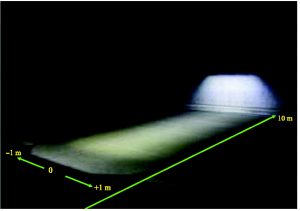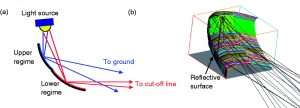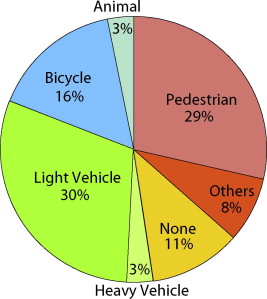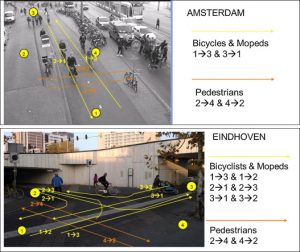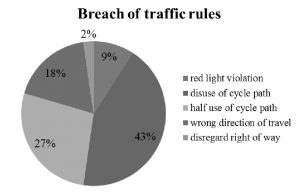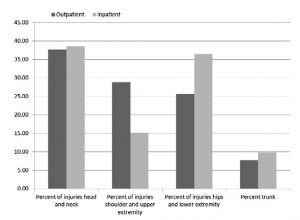This study carried out telephone interviews with cyclists in Tasmania, Australia, to understand how frequently they had accidents. It found an overall accident rate of 1.6 major accidents and 3.7 minor accidents per 100,000 km ridden. Major accidents were defined as those requiring medical attention or resulting in a day or more off work. Minor accidents included only those which affected daily activities or had a financial cost. 37 percent of minor and 49 percent of major accidents involved a third party (cars, pedestrians, other cyclists etc). Surprisingly only 25 percent of major accidents involved a motor vehicle, the same as for those involving a pedestrian.
Although a wide range of factors were considered, due to the small sample size, in most cases no statistically significant correlations were found. Men were found to be less likely to have minor accidents while mountain biking significantly increased the likelihoodd of accidents, both minor and major. The study was carried out over eight months spanning 2011 to 2012. The 136 participants were recruited through approximately 700 e-mails and newsletters from cycling clubs and by adverts in bike shops.
Abstract:
Purpose: To characterise the demographics, cycling habits and accident rates of adult cyclists in Tasmania.
Methods: Volunteers ≥18 years of age who had cycled at least once/week over the previous month provided information on demographics; cycling experience; bicycles owned; hours/km/trips cycled per week; cycling purpose; protective equipment used; and major (required third-party medical treatment or resulted ≥1 day off work) or minor (interfered with individuals’ regular daily activities and/or caused financial costs) accidents while cycling.
Results: Over 8-months, 136 cyclists (70.6% male) completed the telephone survey. Mean (standard deviation) age was 45.4 (12.1) years with 17.1 (11.4) years of cycling experience. In the week prior to interview, cyclists averaged 6.6 trips/week (totalling 105.7 km or 5.0 h). The most common reason for cycling was commuting/transport (34% of trips), followed by training/health/fitness (28%). The incidence of major and minor cycling accidents was 1.6 (95% CI 1.1–2.0) and 3.7 (2.3–5.0) per 100,000 km, respectively. Male sex was associated with a significantly lower minor accident risk (incidence rate ratio = 0.34, p = 0.01).Mountain biking was associated with a significantly higher risk of minor accident compared with road or racing, touring, and city or commuting biking (p < 0.05).Conclusions: Physical activity of regular cyclists’ exceeds the level recommended for maintenance of health and wellbeing; cyclists also contributed substantially to the local economy. Accident rates are higher in this sample than previously reported in Tasmania and internationally. Mountain biking was associated with higher risks of both major and minor accidents compared to road/racing bike riding.
Reference:
Accident rates amongst regular bicycle riders in Tasmania, Australia
Palmer, Andrew J. (Menzies Research Institute Tasmania, University of Tasmania, 17 Liverpool Street, Hobart, TAS 7000, Australia); Si, Lei; Gordon, Jared M.; Saul, Tim; Curry, Beverley A.; Otahal, Petr; Hitchens, Peta L. Source: Accident Analysis and Prevention, v 72, p 376-381, November 2014

